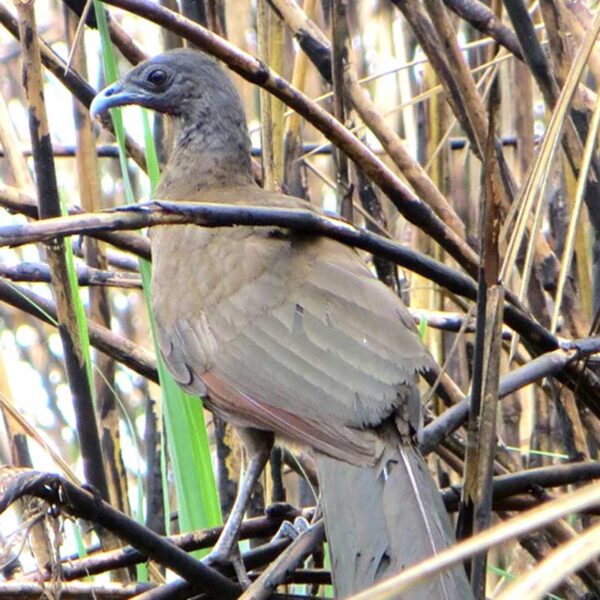The Gray-headed Chachalaca
It was very early, still in the early hours of the morning, when the sound of a racket was heard […]
It was very early, still in the early hours of the morning, when the sound of a racket was heard at the edge of the forest surrounding the Agua Clara Observation Center, in Colón. A group of large birds settled in a guásimo tree to start the concert of the Chachalaca Cabecigris, welcoming the new day from the northern entrance of the Panama Canal. Their polyphonic chorus sounded like an alarm signal in the middle of the forest, but it was far from strident, but rather harmonious and lively.

The Chachalaca Cabecigris, also known as Paisana, is a rather large gallinaceous bird, exclusive of the neotropics and a resident neighbor of the Canal watershed. It is approximately 50 centimeters long, including the tail, and weighs about 500 grams. It resembles a hen with a very long tail. The head is dark gray, the rest of the body is brown and the tip of the tail is whitish. It frequents secondary forests, shrub areas, high scrub, forest fringes and lowland grasslands.
The Chachalaca Cabecigris, like other species of native fauna, are indicators of the health of the ecosystem, and their population dynamics help us to evaluate the quality of the environment where they live. Likewise, they play a valuable role in seed dispersal in the forest, which is an essential ecological process for the regeneration and restoration of disturbed plant communities.
Just as on the Atlantic, their song is heard on the Pacific, and thanks to the forested areas of the interoceanic waterway, which provide shelter and sustenance to native fauna, we will have the Gray-headed Chachalaca singing for a good while.
Scientific name: Ortalis cinereiceps
Data: Lives in family groups of about 12 individuals. It lays between two to four eggs and theirs incubation period is 22 days. Its nutrition is based on fruits, leaves, flowers, seeds and some insects. They are attracted by crops such as mango, cashew, banana, papaya, guava and coffee cherry. As a hunting resource, it provides value as a source of protein in the subsistence economy in regions where they are abundant. Natural enemies include the ocelot, opossum and boa constrictor.